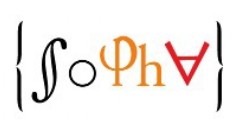According to classical intensionalism, propositions can be reduced to sets of possible worlds. More precisely, the proposition expressed by a statement reduces to the set of possible worlds in which it is true. A well-known difficulty is that statements true in the same possible worlds may have distinct subject matters, and thus express distinct propositions.
A more satisfactory reduction proposed by Hawke, Hornischer, and Berto (2024) identifies a proposition with an ordered pair consisting of a set of possible worlds and a subject matter. We raise a difficulty concerning the HHB proposal, which leads to the identification of propositions expressed by statements that intuitively differ in meaning, in spite of being true in the same possible worlds and sharing the subject matter, such as:
(1) Sylvan's box is empty and not empty and belonged to Richard Sylvan.
(2) Sylvan's box is empty and not empty and did not belong to Richard Sylvan.
We consider instead a reduction of propositions to ordered pairs consisting of a set of exact verifiers and a set of exact falsifiers, following (Fine 2017a, 2017b). This hypothesis can be classified as a one-component semantics, insofar as verifiers and falsifiers are entities of the same category, contrary to the reduction of HHB which involves entities of distinct categories. HHB offer two general arguments against one-component semantics. On the one hand, the topic of a statement cannot be derived from its truth conditions. On the other hand, for any one-component semantics, there would be semantically equivalent statements with distinct topics. We respond that they fail to reach the reduction proposed here. To do so, we exploit a crucial distinction between truth conditions and exact truthmaking. The exact verifiers of a statement, unlike its truth conditions, are sufficiently fine-grained to extract their subject matter. Furthermore, the proposed reduction does not result in a simple one-component translation of HHB's two-component reduction for it correctly predicts that the statements (1) and (2) express distinct propositions.
References
Fine, Kit (2017a). “A Theory of Truthmaker Content I : Conjunction, Disjunction and
Negation”. In : Journal of Philosophical Logic 46.6, p. 625-674.
— (2017b). “A Theory of Truthmaker Content II : Subject-Matter, Common Content,
Remainder and Ground”. In : Journal of Philosophical Logic 46.6, p. 675-702.
Hawke, Peter, Levin Hornischer et Franz Berto (2024). “Truth, Topicality, and
Transparency : One-Component Versus Two-Component Semantics”. In : Linguistics
and Philosophy 47.3, p. 481-503.

 PDF version
PDF version
